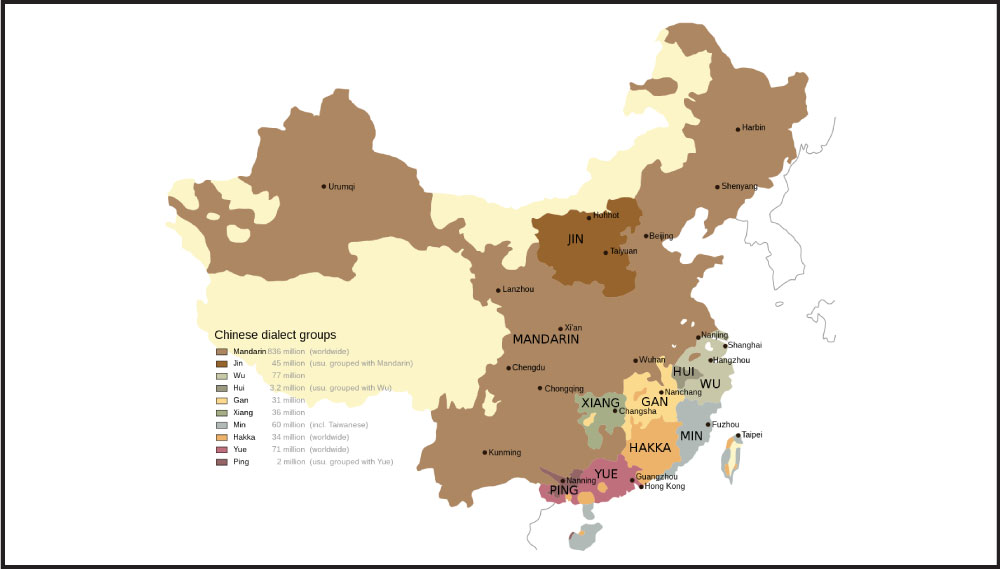There are a bazillion of Chinese dialectal varieties (or 方言 – fāng yán) spoken in mainland China and beyond. And yet, when asked about what language people communicate with in this staggeringly populated country, most people will unashamedly exclaim “It’s Chinese, duh!”. Then, there’s the category of people who at least know to distinguish between Mandarin and Cantonese Chinese. Nevertheless, the whole story is far more complicated than that.
So, how many varieties of spoken Chinese are there in reality and which are the primary ones? To answer this complicated question, it’s important to first set the scene by taking into account what a dialect even is (spoiler alert: there’s a different interpretation to the concept than you might like to think). Let’s explore the intricacies and wonders of the language of Chinese!
What do we even mean by dialect in the Chinese context?
How many varieties of Chinese are there?

1. Mandarin
Mandarin (普通话 – pǔ tōng huà) is the native language of over 70% of China’s gigantic population, amounting to a total of 920 million native speakers. Given the vastness of this dialect’s variations (with a potential number of 93 Mandarin dialect variants), the language can be broken into 4 major groups: Southwest, Southern, North-western and Northern Mandarin. Outside of Chinese territory, Mandarin is spoken most widely in Singapore and Taiwan.
Fun fact: When compared to some other Chinese dialects, Mandarin has a relatively homogeneous pronunciation across the different regions in which it’s spoken. While there are some regional variations in pronunciation indeed, they are generally less pronounced compared to some other dialects, such as Cantonese or Min.
2. Yue
Yue (粤语 – yuè yǔ), or Cantonese, is used by 70 million people, mainly in the Guangdong province, as well as in Hong Kong and Macau. These are some 20 million more Yue speakers outside of these areas. Although non-Chinese people frequently recognize Cantonese as a form of Chinese, few people actually known it for its alternative Yue name.
Fun fact: Cantonese preserves more features of Ancient Chinese than do the other major Chinese languages. Most of the final consonants remain the same from the ancient language, and the dialect preserves the ancient number of 6 tones, which is in contrast to the 4 tones found in Mandarin.
